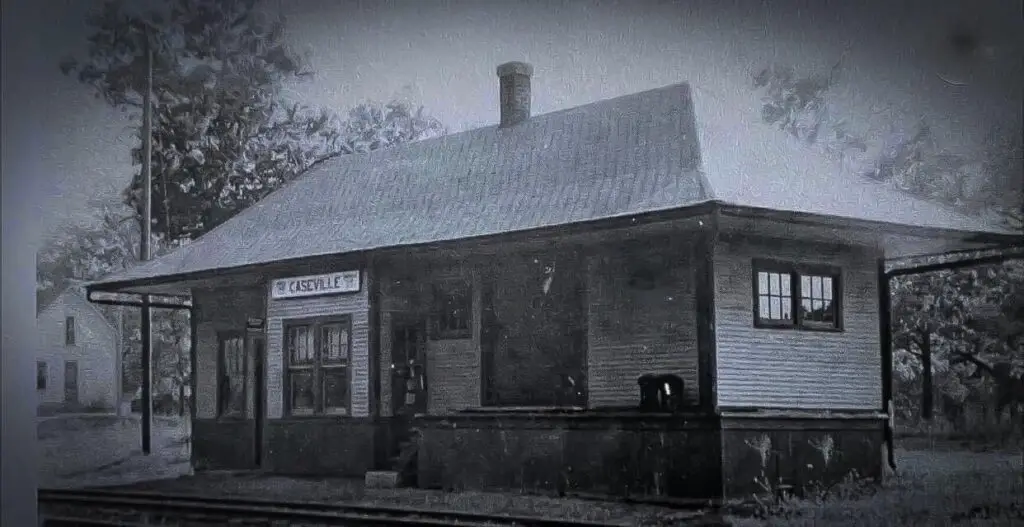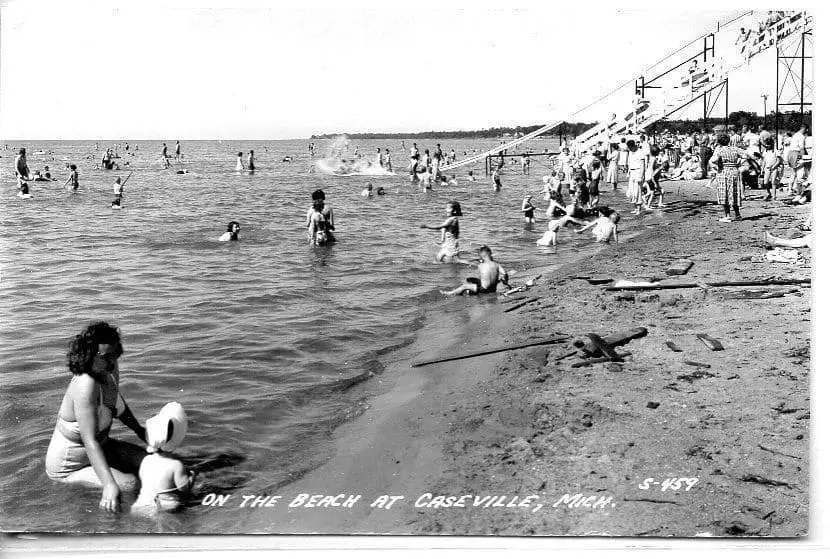Pictures and Postcards do a great job of capturing a moment in time. We found these gems throughout the Internet and made the collection from the 1800s through the 1960s. They are a fascinating glimpse of the history of Caseville in pictures. It’s also amazing what has not really changed over the past 80 years. Many buildings and landmarks are still visible today.
Caseville’s history in pictures shows its transformation from lumbering to an industrial village and finally to a resort and tourist town. While the railroad was completed in 1881, delivering freight and passengers, it never had the tourist appeal that Bay Port had with its fine hotel and Pointe Aux Barques with its resort cottages. The Upper Thumb tourism industry started with the completion of M-25 around the Thumb in the 1930s. M-25 was Michigan’s first scenic highway. The rise of tourism in the area was encouraged by most of the shoreline towns of the Thumb.
History of Caseville Michigan
Caseville, Michigan, is a small yet historically rich community in Huron County at the tip of the Thumb region. It’s known for its picturesque landscapes, vibrant community events, and a deep-rooted history that dates back to the 19th century.
The area around Caseville was originally inhabited by Native American tribes, who found its location along Lake Huron’s shores ideal for fishing and transportation. European settlers arrived in the mid-1800s, attracted by the region’s abundant natural resources and the promise of a new life.
The town was named after major landowner Leonard Case. Case was a key figure in the town’s early development, and his influence is still recognized today. The establishment of Caseville can be attributed to the lumber industry, which boomed in Michigan during the 19th century. The surrounding forests provided ample resources for sawmills, and the proximity to waterways facilitated the transport of lumber to other regions.
As the lumber industry waned towards the end of the 19th century, agriculture began to take a more central role in the local economy. The fertile land around Caseville supported a variety of crops and livestock, allowing the community to thrive.
In the 20th century, Caseville began to transform into the vacation destination it is known as today. Its beautiful beaches, scenic landscapes, and recreational opportunities attracted visitors from across the state and beyond. The town embraced this shift, developing facilities to accommodate tourists, such as parks, campgrounds, and events.
One of the most notable events in Caseville is the annual Cheeseburger in Caseville festival, a celebration inspired by Jimmy Buffett’s song “Cheeseburger in Paradise.” The festival embodies the town’s spirit of fun and relaxation, drawing visitors with its music, food, and themed activities.
Today, Caseville remains a beloved destination for those seeking a peaceful retreat or an adventure in Michigan’s great outdoors. Its history is preserved in local landmarks and museums, and the stories passed down through generations contribute to the unique character of this Michigan gem.
The Events of Caseville Today
Today, Caseville is known for its large beachfront, excellent harbor, and festivals. The Ribstock festival kicks off the summer with BBQ and great country music, Cheeseburger in Caseville pays tribute to Jimmy Buffet music, grilled burgers, and a chance to be a Parrothead for a week and Shanty Days offers a mid-winter blast of fun on the ice.
Related History of Caseville in Pictures and Postcards

























